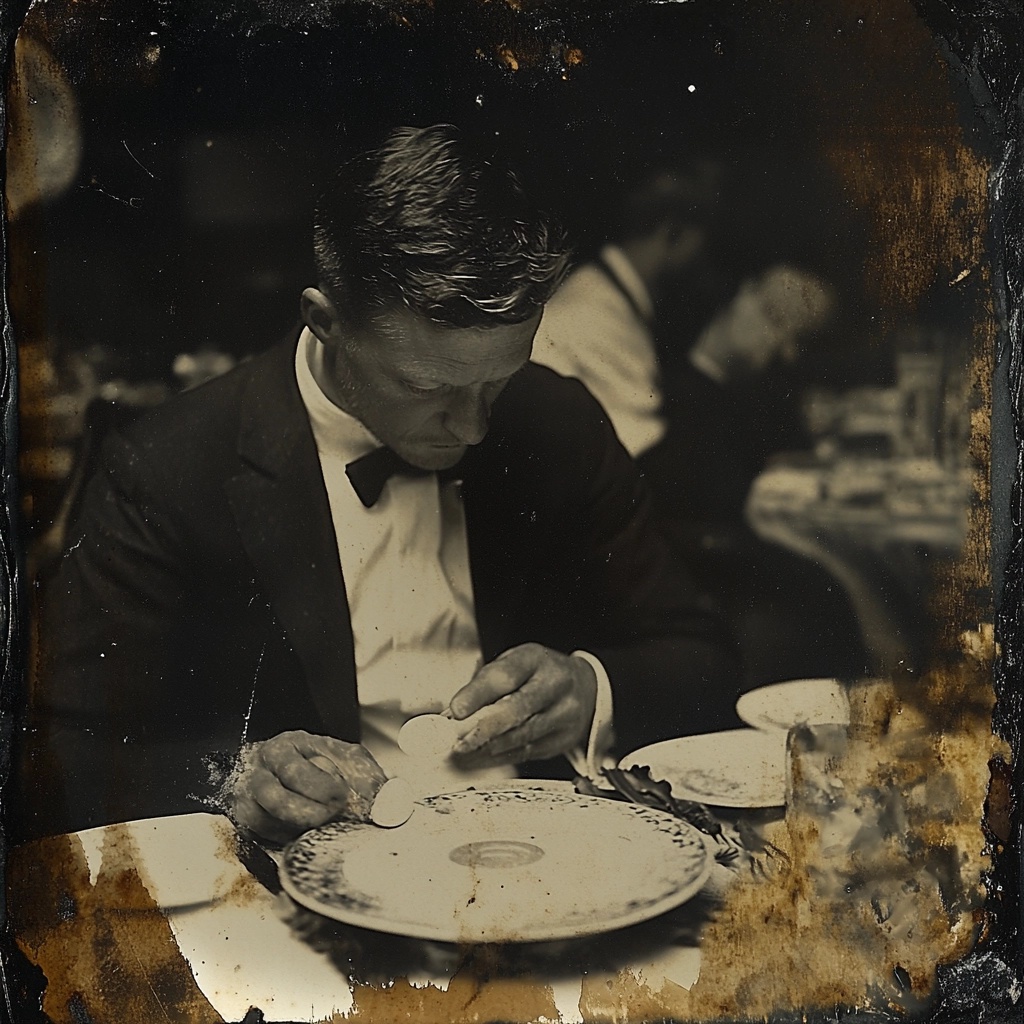THE GOAT (4)
By:
January 24, 2025

“The Goat: Cardiff, A.D. 1935” was first published in Naomi Mitchison’s 1929 collection Barbarian Stories. Compare with “The Lottery” (The New Yorker, 1948), for which Shirley Jackson would become famous. HiLoBooks is pleased to serialize the story for HILOBROW’s readers.
ALL INSTALLMENTS: 1 | 2 | 3 | 4 | 5 | 6 | 7 | 8.
The banquet of the owners was to start at 1 o’clock at the Town Hall. They were received by the Mayor and City Council in full robes, and police kept the way clear for their cars. We didn’t know who more than a few of them were; they came from all over South Wales, and were mostly mine or shipowners. But the crowd knew quite amazingly and pointed them out to one another. We saw that old villain, Sir David Gunn, who broke the strike at Nantygern last year, driving up; and someone in the crowd behind us shouted: ‘Oh Dai, it is you will be the Goat this year! Oh, a lovely Goat!’ The old man turned and grinned out of the window of his car, and I saw his gapped teeth with little patches of gold in them. That was how we found out that here, at least, the one on whom the Lot fell was called the Goat. It seemed to have good precedents as a name. There were a few women among the guests, but of course the great majority are men still and so far the Lot has never fallen on a woman owner. I’m a little afraid there may be an extra fuss when it does.
All the time there was a continuous buzz of cinema cameras. The reporters were fairly obvious; quite apart from their clothes they were mostly nervous and not liking it much. Tom and I had gallery tickets and went up. The onlookers were a wonderful mixture, some local, and some representing all sorts of admirable or fantastic societies or movements or ideas. The woman next me was clearly that sort. One tried to recognize people at the banquet, but it is difficult from above. But some we did, and there were a few whom one or both of us knew a little and remembered meeting in ordinary drawing-rooms. There was one charming man, the owner of a small colliery, who had been one of the first to put in a modern pit-head installation with sunlight treatment and so on. His two small girls were going to the same school as my June. It was queer seeing him there; first it made me think of the war and seeing one’s friends off at Victoria by the leave-trains that took them to a much higher chance of death, and of death that would probably do far less good to anyone.
The actual meal lasted for some time; there was some goodish music, and they were being given a good deal to drink, though a curiously large number seemed to be teetotalers. They had each drawn their number after the soup — bisque d’homard and marvellous it smelt, even up in the gallery — and presumably each knew his by heart now. Most of them shoved that horrible little white disc under their bread-plates, where at least it wouldn’t appear till dessert.
RADIUM AGE PROTO-SF: “Radium Age” is Josh Glenn’s name for the nascent sf genre’s c. 1900–1935 era, a period which saw the discovery of radioactivity, i.e., the revelation that matter itself is constantly in movement — a fitting metaphor for the first decades of the 20th century, during which old scientific, religious, political, and social certainties were shattered. More info here.
SERIALIZED BY HILOBOOKS: James Parker’s Cocky the Fox | Annalee Newitz’s “The Great Oxygen Race” | Matthew Battles’s “Imago” | & many more original and reissued novels and stories.
